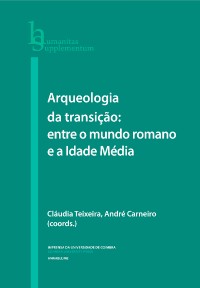Please use this identifier to cite or link to this item:
https://hdl.handle.net/10316.2/42140| DC Field | Value | Language |
|---|---|---|
| dc.contributor.author | Pérez González, Cesáreo | |
| dc.contributor.author | Hernando, Olivia V. Reyes | |
| dc.date.accessioned | 2017-06-22T10:38:40Z | |
| dc.date.accessioned | 2020-09-06T12:09:36Z | - |
| dc.date.available | 2017-06-22T10:38:40Z | |
| dc.date.available | 2020-09-06T12:09:36Z | - |
| dc.date.issued | 2017 | - |
| dc.identifier.isbn | 978-989-26-1352-9 | |
| dc.identifier.isbn | 978-989-26-1353-6 (PDF) | |
| dc.identifier.issn | 2182‑8814 | |
| dc.identifier.uri | https://hdl.handle.net/10316.2/42140 | - |
| dc.description.abstract | Through the analysis of Las Pizarras archaeological area, a suburban settlement located near the city of Cauca (Coca, Segovia), we will present the phase of changes that undergoes this Late Roman monumental complex, from the 5th century. Together with these functional transformations, which take place in the residential sector, its pars rustica also undergoes a series of other changes. It becomes the seat of activities related to the habitat, the production and the funerary world; already away from the Roman farming. Due to a rigorous and systematic archaeological excavation, the relevant data recorded permit us to set the different occupancy phases attested in the area of “Las Pizarras”, for the period which comprises the Late Antiquity. | eng |
| dc.description.abstract | Con el análisis del área arqueológica Las Pizarras, enclave suburbano situado en las inmediaciones de la ciudad de Cauca (Coca, Segovia), daremos a conocer la etapa de cambios sufridos por el conjunto monumental tardorromano a partir del siglo V d. C. De manera conjunta a estas transformaciones funcionales del sector residencial, su pars rustica atraviesa una serie de modificaciones en su gestión, convirtiéndose alternativamente en sede de actividades relacionadas con el hábitat, la producción y el mundo funerario, alejadas ya del sistema de explotación agraria romano. Gracias a una rigurosa y sistemática excavación arqueológica, los datos hablan por sí mismos y nos permiten contextualizar las diferentes fases de ocupación registradas en el área de Las Pizarras, para el período que comprende el final del mundo antiguo. | por |
| dc.language.iso | eng | - |
| dc.publisher | Imprensa da Universidade de Coimbra | por |
| dc.relation.ispartof | http://hdl.handle.net/10316.2/41859 | por |
| dc.rights | open access | - |
| dc.subject | villa | eng |
| dc.subject | necropolis | eng |
| dc.subject | habitat | eng |
| dc.subject | transformations | eng |
| dc.subject | production | eng |
| dc.subject | Late Antiquity | eng |
| dc.subject | villa | por |
| dc.subject | necrópolis | por |
| dc.subject | hábitat | por |
| dc.subject | transformaciones | por |
| dc.subject | producción | por |
| dc.subject | Antigüedad tardía | por |
| dc.title | Life and death in Las Pizarras (Segovia): functional transformations in Late Antiquity | por |
| dc.type | bookPart | por |
| uc.publication.firstPage | 387 | - |
| uc.publication.lastPage | 414 | - |
| uc.publication.location | Coimbra | por |
| dc.identifier.doi | 10.14195/978-989-26-1353-6_16 | - |
| uc.publication.digCollection | PB | por |
| uc.publication.orderno | 16 | - |
| uc.publication.area | Artes e Humanidades | por |
| uc.publication.bookTitle | Arqueologia da transição: entre o mundo romano e a Idade Média | - |
| uc.publication.manifest | https://dl.uc.pt/json/iiif/10316.2/42140/203219/manifest?manifest=/json/iiif/10316.2/42140/203219/manifest | - |
| uc.publication.thumbnail | https://dl.uc.pt/retrieve/11049127 | - |
| uc.publication.parentItemId | 54689 | - |
| uc.itemId | 68654 | - |
| item.fulltext | With Fulltext | - |
| item.grantfulltext | open | - |
| Appears in Collections: | Arqueologia da transição: entre o mundo romano e a Idade Média | |
Files in This Item:
| File | Description | Size | Format | |
|---|---|---|---|---|
| life_and_death_in_las_pizarras.pdf | 8.26 MB | Adobe PDF |  |
Items in DSpace are protected by copyright, with all rights reserved, unless otherwise indicated.
